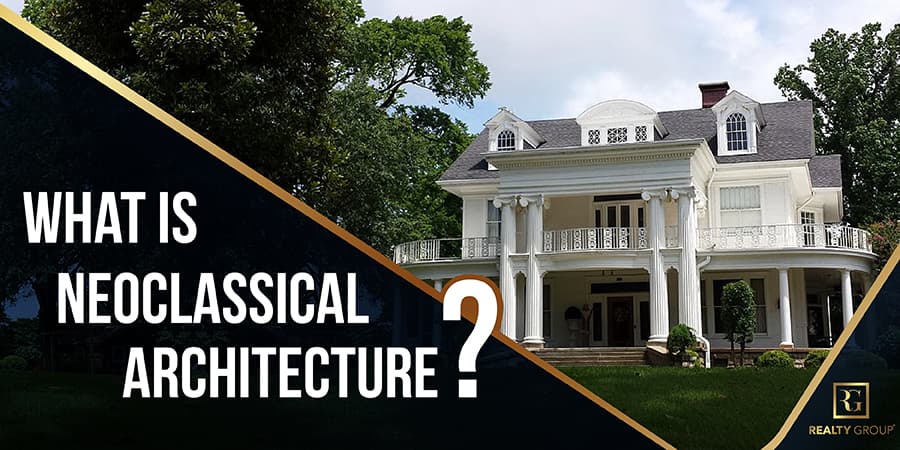Neoclassical architecture was first developed in the 18th century. Neoclassical architecture in general was influenced by ancient Greek architecture and ancient Italian architecture. The walls of structures are very important in this current. With this current, art is combined with architecture. Neoclassical architectures with remarkable features remain important even today. Simplicity and majestic structures have come to the fore. The most obvious indicators of neoclassical architecture are the columns. Neoclassical architecture is a response to the Rococo current. Balanced, large, and symmetrical architectures were used. Neoclassical buildings are usually public buildings.
The most important examples of neoclassical buildings are listed below:
- Triumphal Arch (Paris)
- The Madeleine Church (Paris)
- The Parliament building (Washington DC)
- The Brandenburg Gate (Berlin)
- The Rotunda of Mosta (Malta)
What are the Characteristics of Neoclassical Architecture?
When we examine the characteristics of neoclassical architectures, certain lines are considered. Walls are very important in neoclassical architecture and usually have different designs, but they are simple. The concept of simplicity is one of the main features of neoclassical architecture. Wonders are created with simple designs. Unnecessary details are ignored. Columns and arches are used in neoclassical architecture. Symmetrical buildings are another feature of neoclassical architecture. Domed roofs are a sign that a building is in the neoclassical style. In addition to a domed structure, it is used on gable roofs in the neoclassical current.
Where Did Neoclassical Architecture Emerge?
Neoclassical architecture originated in Italy. As a result of excavations conducted in the 1700s, a revolution in architecture took place. The main event of the current is the excavations carried out in the ancient buildings of Pompeii and Athens. Although the beginning of neoclassical architecture was in Rome, it soon became a current that affected all of Europe.
Why Did Neoclassical Architecture Emerge?
The Neoclassical is actually in opposition to the Rococo current. It appeared in Italy to make simple structures popular again. This is an idea that goes against unnecessary decorations and details. Neoclassical architecture was also born as a reaction to Baroque architecture.
Neoclassical Architectural Buildings in Turkey
The spread of neoclassical architecture in Europe also affected Turkey, which began to Westernize. The Neoclassical architecture of the modern Republic of Turkey and the Ottoman Empire has shown its influence in Turkey in recent times. It is possible to see a large number of Neoclassical architectural monuments in Turkey.
The main examples of Neoclassical architecture are listed below.
1. Istanbul Archeology Museum
The Istanbul Archaeological Museum is one of the oldest museums built in Turkey. The building, built in the 19th century, is one of the most important neoclassical buildings in Turkey. The fact that there are four columns in front of the structure and the gable roof style is the main sign of the neoclassical building style.
2. III. TBMM Building
The construction of the parliament building began in 1937 and was finished in 1960. While a different building was used earlier, this place was built and the assembly was moved. Columns are visible on the front face of the building.
3. Tophane Clock Tower
The Tophane Clock Tower was built in the 19th century. In the clock tower, details are the clearest features of Neoclassical architecture.
Should Neoclassical Buildings be Added to Tours in Turkey Holidays?
When we look at the neoclassical architectural works, it is seen that the most important constructions of the world are also made in this style. People from all over the world also visit these structures in the city they are visiting. Therefore, neoclassical buildings are the ones that should be included in the tours. These structures are special places that must be visited. Looking at the neoclassical buildings in Turkey, these buildings are located in the tourist areas of Turkey. Therefore, it is necessary to add these structures to the tours. You can also check our article which is the best places to visit in Turkey.
What are Examples Of Neoclassical Architecture?
The examples of Neoclassical Architecture are listed below.
- White House
Located in Washington DC, USA, the White House, which was built between 1792 and 1800, has served as the official residence of every US President since President John Adams. An iconic building, the White House is an eye-catching example with its symmetry and striking size.
- Buckingham Palace
Located in London, United Kingdom, this magnificent palace is an architectural work, although it was built in 1703, many additions and changes were made later on. The modernized East Wing was completed in 1850. The exterior of Buckingham Palace was inspired by the French neoclassical architectural style, a favorite of King George IV.
- Le Petit Trianon
Located in Versailles, France, completed between 1762 and 1768, Le Petit Trianon was designed by Ange-Jacques Gabriel. A symbol of the transition from the Rococo style of the early 18th century to the Neoclassical style, this unique structure is located on the grounds of the Palace of Versailles in Versailles. It is a special monument built in memory of Louis XV’s mistress, Madame de Pompadour, who died before it was completed.
- Northern Italy: Villa Tittoni Traverse
Located in Desio, Italy, this unique building is an impressive building associated with Neoclassical architecture. This work, made in 1776, was designed by Giuseppe Piermarini. The facade of the building was added later by the architect Pelagio Palagi in the 1840s.
What Material is Used in Neoclassical Architecture?
In Neoclassical Architecture, the works are built with stone facades, red brick, yellow brick, and various materials that will create the appearance of the stone. The style should be clear and consistent, while each uses a different mix of elements.
This modern building of the 1900s needed to achieve an appearance that would reflect a pure Palladian aesthetic. The striking features of these works reflect the striking perspective of modern Neoclassicism, using towering marble pillars, straight sills and pillars, and ancient building materials.
